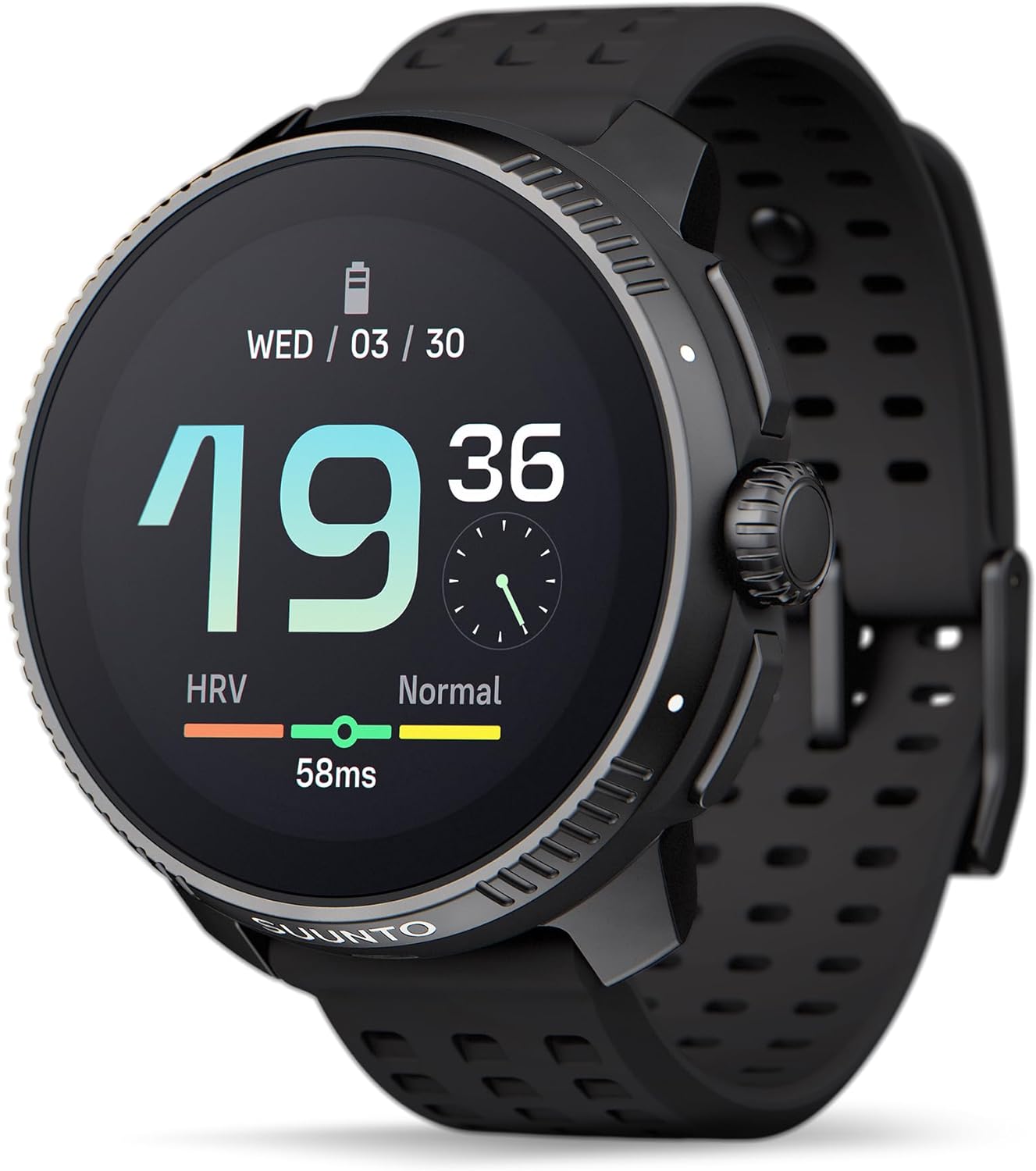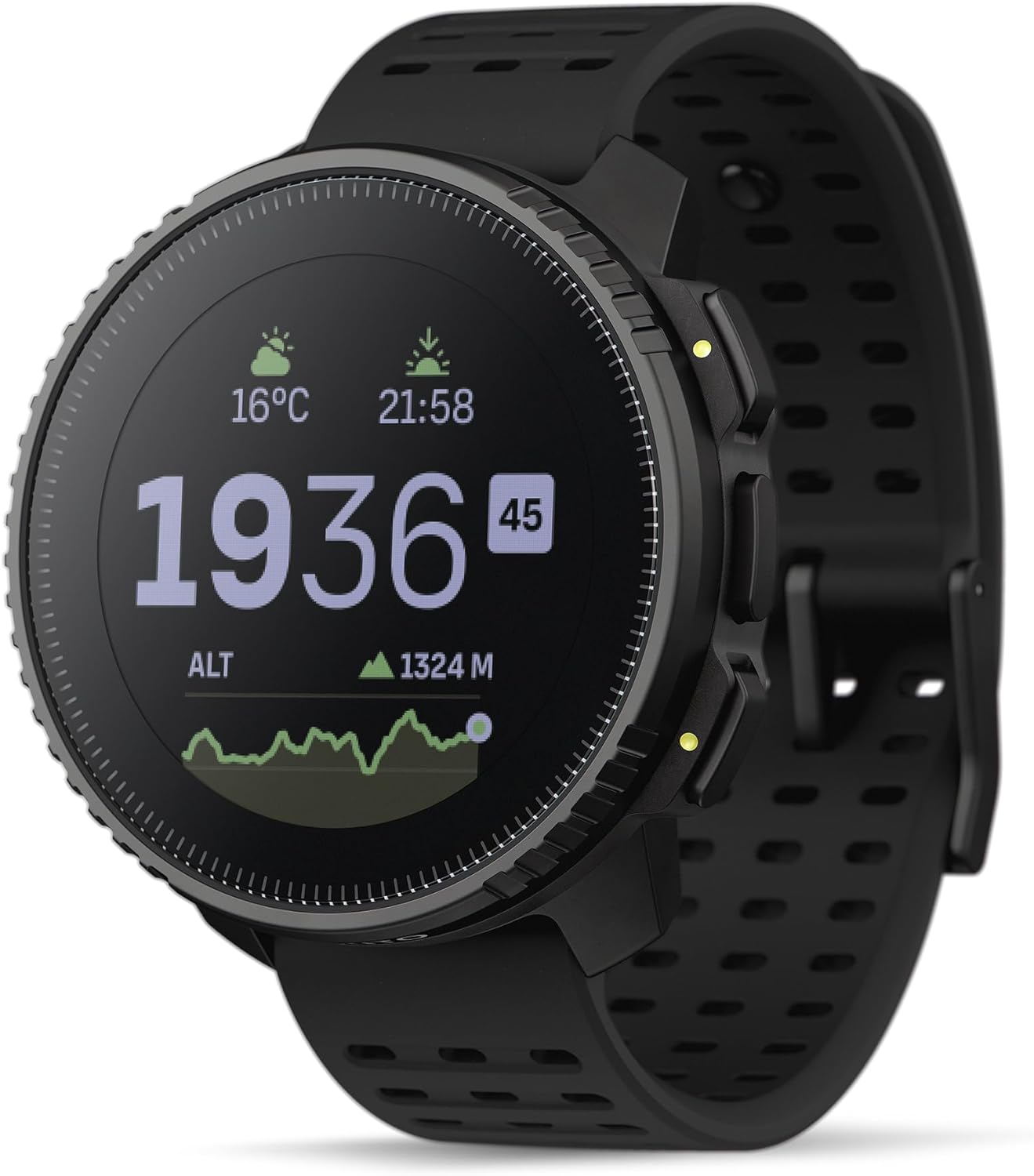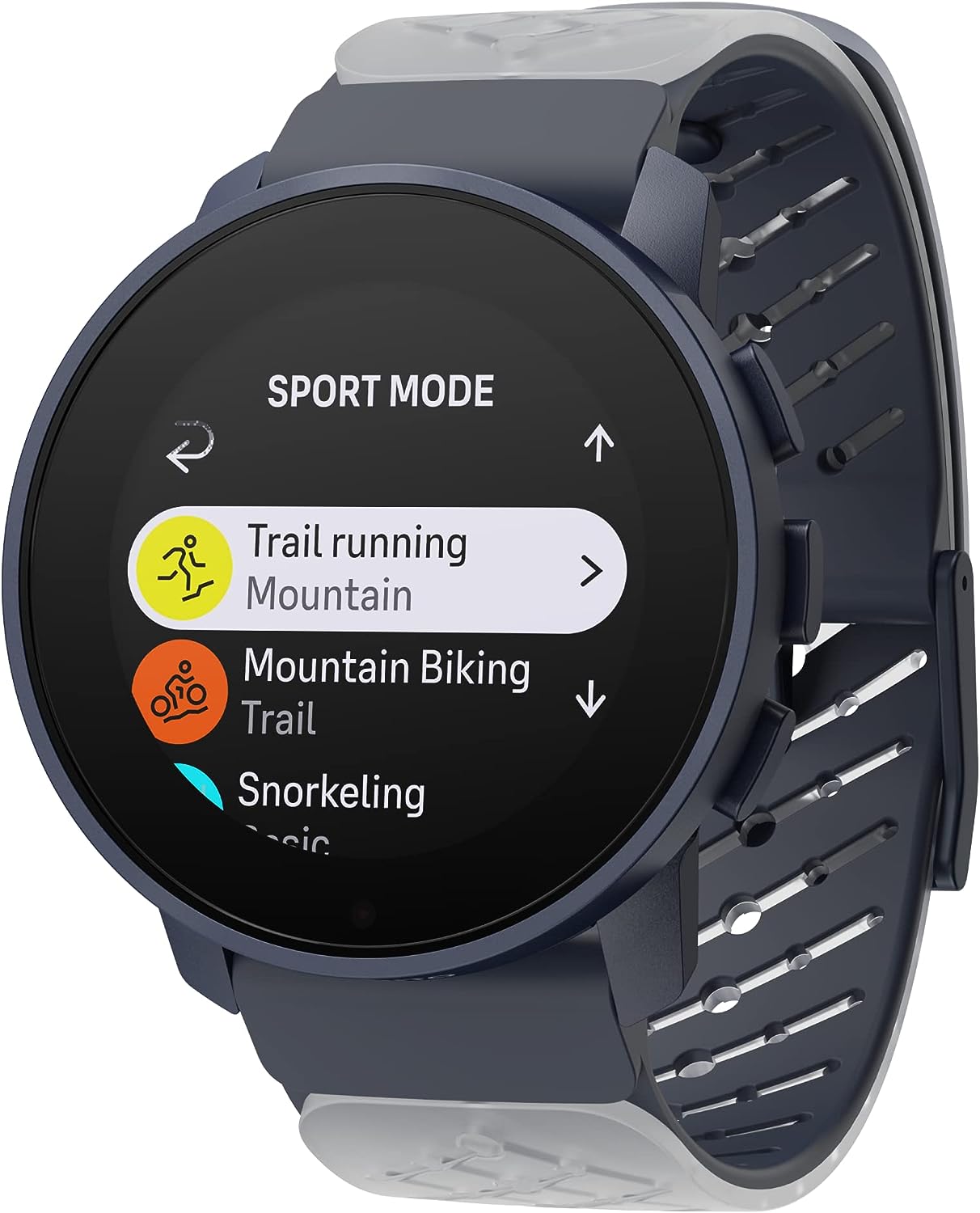|
The most complete! Suunto Race
Screen: 1.43 inches |
Great autonomy! Suunto Vertical
Screen: 1.4 inches |
The most economical! Suunto 9 Peak Pro
Screen: 1.2 inches |
If you are thinking about changing your smartwatch or buying one to carry out greater control of your physical and sports activity, you will surely have come across Suunto watches. It is one of the revelation brands of recent years, and in a short time, it has managed to position itself as one of the most popular. In this article, we show you the most important differences between three of their most recent models: Suunto Race, Suunto Vertical and Suunto 9 Peak Pro.
The first thing we look at is that the Suunto Race and Suunto Vertical have a higher price range than the Suunto 9 Peak Pro, which is somewhat cheaper. On the one hand, this is because it has been on the market longer. But, on the other hand, it is the one with the most “simple” features. In some aspects, such as the volume of sports modes or physical activity monitoring, there are no major changes. Although, for example, it does not include the artificial intelligence system that acts as a sports coach and that we do see in the Suunto Vertical and Race.
Continuing with the differences, the Suunto Race is the only one of the three that has a screen with AMOLED technology, which means that, in outdoor environments, it is the one that offers the best visibility because it is brighter. On the other hand, the Suunto Vertical has a version that allows solar charging, although its price is higher. So that you can check which of the three Suunto smartwatches is most worth it, we explain their differences and similarities throughout this review:
Suunto Race vs Suunto Vertical vs Suunto 9 Peak Pro – Comparative table
Below, we collect the main characteristics of the three Suunto smartwatches that we have compared. This way, you can check the most important differences and similarities:
(Swipe the table to see all the content)
Suunto Race
|
Suunto Vertical
|
Suunto 9 Peak Pro
|
|
| Dimensions | 49 x 49 x 13,3 mm | 49 x 49 x 13,6 mm | 43 x 43 x 10,8 mm |
| Weight | 83 g | 86 g | 64 g |
| Colors | Black and dark gray | Black, lime green, sand and ruby | Black, navy blue, green, gold, sand and gray |
| Bezel Material | Stainless steel | Stainless steel | Stainless steel |
| Screen type | AMOLED | LED | LED |
| Screen size | 1,43″ | 1,4″ | 1,2″ |
| Resolution | 466 x 466 pixels | 280 x 280 pixels | 240 x 240 pixels |
| wrist diameter | 125-175 mm | 125-175 mm | 125-175 mm o 125-200 mm |
| Waterproof | 100 meters | 100 meters | 100 meters |
| Clock mode autonomy | Up to 26 days | Up to 60 days | Up to 30 days |
| Autonomy intensive use | Up to 12 days | Up to 30 days | Up to 21 days |
| Solar charging | No | Titanium Solar Version | No |
| Heart rate | Yes | Yes | Yes |
| Blood oxygen saturation | Yes | Yes | Yes |
| Menstrual cycle | No | No | No |
| Stress level | Yes | Yes | Yes |
| Sleep analysis | Yes | Yes | Yes |
| Sports modes | More than 95 | More than 95 | More than 95 |
| Coach training | Yes | Yes | No |
| GPS | Yes | Yes | Yes |
| Contactless payment | No | No | No |
| Music control | Yes | No | No |
| Connectivity | Bluetooth | Bluetooth | Bluetooth |
| Compatibility | Most common smartphones | Most common smartphones | Most common smartphones |
Same design, different screen

At first glance, we can see that Suunto has not implemented major changes at the design level, since the three models follow the same aesthetic line. It should be noted that they are available in various colors, although, in some cases, this implies a price variation. The main change from a physical point of view is the type of screen, which goes from being LED in the Suunto Vertical and 9 Peak Pro, to AMOLED in the Suunto Race.
This change is noticeable, above all, in the brightness and visibility of the screen in certain outdoor lighting conditions, which is greater on the Suunto Race. On the other hand, what is striking is the fact that the Suunto 9 Peak Pro is lighter than its two rivals, despite having almost the same dimensions. This is because the 9 Peak Pro does not have a rotating crown that we do see on the Vertical and Race, and which facilitates some aspects such as navigation.
How is the sporting performance of the Suunto?
One of the reasons why many users opt for a smartwatch of this type is sports performance, and, in this case, it is quite similar in the three models. All of them have the capacity to withstand water immersion of up to 100 meters, preferably in a pool, and not in open water. In addition, they have more than 95 integrated sports modes to choose from, although they can expand them through the app. In addition, they track the same sports, although here we have to clarify some small differences.
The Suunto Race, for example, offers estimates of progress when you practice Running based on the data it has previously collected. On the other hand, only the Suunto Vertical offers real-time guidance information on the intensity and duration of the training. In addition, both the Suunto Race and the Vertical include an artificial intelligence system that acts as a sports coach, making sports performance more intense and exhaustive than in the Suunto 9 Peak Pro.
Are there differences in health metrics?

If we stop at the health parameters, the situation is similar to the previous one. That is, all of them are capable of measuring heart rate, blood oxygen saturation, stress level and analyzing sleep, but with nuances. On the other hand, none of them allow monitoring of the menstrual cycle. And, when it comes to those small differences, it should be noted, for example, that only the Suunto Race and the Vertical can measure the variation in heart rate during the sleep phase. In addition, the Suunto Race distinguishes between the REM phase and the light sleep phase.
Battery life and charging type
Another of the most important differences for smartwatch users is how long the battery of each model lasts. In this sense, we must keep in mind that this depends on the use we make. However, all things being equal, the Suunto Vertical is capable of lasting up to 60 days in watch mode, far from the 26 and 30 days of the Suunto Race and 9 Peak Pro, respectively. And, in intensive use mode, the autonomy is reduced to 30, 12 and 21 days respectively. On the other hand, the Suunto Vertical has a version (Titanium Solar) that allows solar charging, although the price can be raised.
music control
One of the differences that has caught our attention the most has to do with the music controls from the smartwatch itself. This feature is not the most common, since in most models, these controls are done directly from the smartphone. On the other hand, the Suunto Race allows you to control the music from the watch itself, which provides much more comfort if we are doing an activity at that moment.
Connectivity and compatibility

Finally, we will tell you about the differences in terms of connectivity and compatibility of smartwatches with other devices. In this regard, it should be noted that the three smartwatches are compatible with the most common smartphone models, whether Android or iPhone, according to the brand itself.
Now, if you want to send some automatic responses to the messages that you can see on the screen, you will only be able to do so if you have an Android smartphone. Likewise, all of them have Bluetooth connectivity and integrate GPS, which allows them to offer maps and navigation functions.
However, in none of them is it possible to make contactless payments. It should be noted that the Suunto Race has an NFC chip, but, at the moment, it does not have any attached function. In fact, everything could indicate that, in future updates, NFC technology could be used to measure glucose, but in no case is it contemplated to make contactless payments.
So, which Suunto smartwatch is better?
That depends on what you’re looking for and what your preferences are. The Suunto 9 Peak Pro is the cheapest of the three, but it lacks some interesting features, such as the advanced sports coach that its two rivals do have. In addition, it is the one with the lowest resolution screen, and the one that offers the least detail in the metrics and reports related to health and exercise that it monitors. However, it covers all the functions that the Vertical and Race models also cover, just in a slightly more basic way.
On the other hand, the Suunto Race and the Suunto Vertical have a more similar price, because they are both one level above the 9 Peak Pro. Even so, the Suunto Race has some additional functionalities, such as the possibility of controlling music directly from the watch or the distinction between deep and light sleep phases. On the other hand, the Suunto Vertical has a longer autonomy, something that may be interesting for you if you frequently do outdoor sports or if you travel frequently.
Therefore, think about what aspects you most need to cover with your smartwatch and choose the one that best suits them. What we can guarantee you is that the three sports watches have the guarantee offered by Suunto in terms of performance, so the result will be good in any case.



